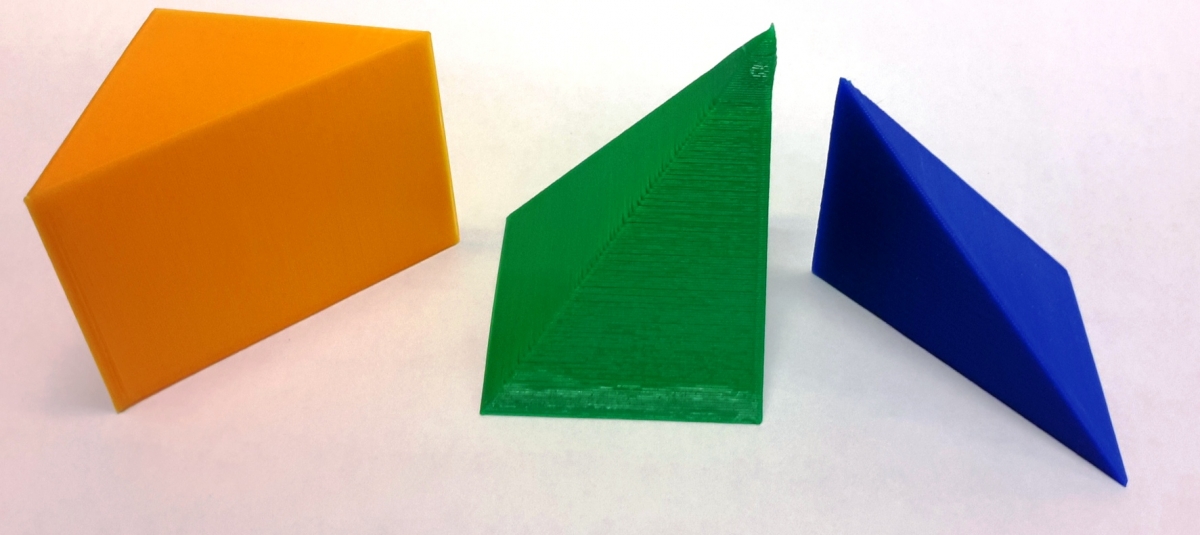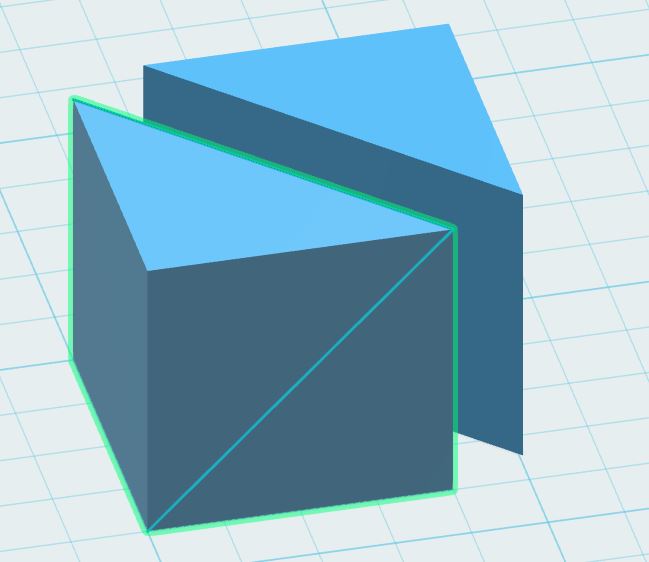- About MAA
- Membership
- MAA Publications
- Periodicals
- Blogs
- MAA Book Series
- MAA Press (an imprint of the AMS)
- MAA Notes
- MAA Reviews
- Mathematical Communication
- Information for Libraries
- Author Resources
- Advertise with MAA
- Meetings
- Competitions
- Programs
- Communities
- MAA Sections
- SIGMAA
- MAA Connect
- Students
- MAA Awards
- Awards Booklets
- Writing Awards
- Teaching Awards
- Service Awards
- Research Awards
- Lecture Awards
- Putnam Competition Individual and Team Winners
- D. E. Shaw Group AMC 8 Awards & Certificates
- Maryam Mirzakhani AMC 10 A Awards & Certificates
- Two Sigma AMC 10 B Awards & Certificates
- Jane Street AMC 12 A Awards & Certificates
- Akamai AMC 12 B Awards & Certificates
- High School Teachers
- News
You are here
Exploring Liu Hui’s Cube Puzzle - In the Classroom: 3-D Design and Printing of the Puzzle Solids
GeoGebra 3-D modeling is pedagogically powerful, allowing students to develop imaginative skills for sense-making in a 3-D environment. However, GeoGebra did not yet support 3-D printing as of early 2017. Although paper folding is practically adequate for classroom use, it is lacking in accuracy. Meanwhile, 3-D design software has become freely accessible, inviting mathematics educators to engage students with mathematical applications and design-based learning. Therefore, when 3-D printing service became available at my university library, I decided to take one step further along this cube excursion and explore Liu Hui's Cube Puzzle as a 3-D design task. As a matter of fact, the cube is a fundamental starting point for all 3-D design software. It is beneficial for prospective mathematics teachers to see the connections between basic 3-D design and the mathematics they are learning and will be teaching to school children.
I chose to use Autodesk 123D Design®, which is free for educational purposes. In addition, 123D Design has a simple and friendly user interface, which can be quickly introduced to middle and secondary students as well as prospective and classroom mathematics teachers, using specific design tasks. It turned out that Liu Hui's Cube Puzzle can be readily built out of a cube in 123D Design, using two splitting operations, both along a face diagonal. These splitting operations are accessible to middle and secondary students as well as to prospective teachers when using 123D Design. Figures 18a-f, below, show how to apply the two splitting actions in 123D Design in order to perform Liu Hui's dissection of the cube. (Download a 123D Design file for Liu Hui's dissection of the cube into a quiandu, yangma, and bie'nao. Download a 123D Design file for Liu Hui's dissection of an arbitrary rectangular prism into a quiandu, yangma, and bie'nao.)
Figure 18. Liu Hui's Cube Puzzle can be readily built in 123D Design® using two splitting actions. Perform the following steps, illustrated in Figures 18a-f, below, to carry out Liu Hui's cube dissection using 123D Design.
Figure 18a. Sketch a diagonal polyline on one of the faces in preparation to split the cube.
Figure 18b. Use the split solid tool to cut the cube in half into two quiandu (triangular prisms).
Figure 18c. The cube is now cut into two quiandu.
Figure 18d. Sketch a diagonal polyline on one of the square faces of a qiandu.
Figure 18e. Use the split solid tool to dissect the chosen quiandu into a yangma (rectangular pyramid) and a bie'nao (triangular pyramid).
Figure 18f. The cube is now split into Liu Hui's cube puzzle consisting of a quiandu, a yangma, and a bie'nao.
Once the cube has been split into its qiandu (triangular prism), yangma (rectangular pyramid), and bie'nao (triangular pyramid) pieces, students should be allowed to play with them within 123D Design and tweak their properties, such as colors and material, in order to develop a better understanding and appreciation of the puzzle and the geometric processes involved. This is a pleasant experience for the majority of students, who have rarely manipulated a virtual cube in such a manner. Once the three solids are tweaked to the students' satisfaction, they can be exported to a STereoLithography (STL) file and sent to a 3-D printing station, where the STL files will be processed (sliced) and printed. About half way through the printing task, small magnets can be dropped inside each solid for easy assembly, if so desired. An example is shown in Figure 19. (Download an STL file, suitable for direct 3-D printing of the three pieces of the cube puzzle.)

Figure 19. An example of 3-D printed solids for the cube puzzle—a qiandu, a yangma, and a bie'nao, from left to right.
If enough sets of qiandu, yangma, and bie'nao are printed, students could revisit the group work discussed previously. To see how six bie'nao come together in a cube, three of them should be mirrored either in 123D Design or in the printing software. (Download a 123D Design file for the case of three yangma making a rectangular prism.) By examining the paper models and 3-D printouts side by side, students will have an additional opportunity to reflect on the diverse connections between hands-on paper folding, computer-based 3-D design, and 3-D printing, all converging to a pleasant mathematical experience. Furthermore, 3-D printouts can be used to reconstruct Liu Hui's original dissection of yangma and bie'nao for an enhanced understanding of Liu Hui's argument for the 2-to-1 ratio between the volumes of a yangma and a bie'nao, as shown in Figure 20. (Download a 123D Design file for Liu Hui's further dissection of yangma and bie'nao.)

Figure 20. Liu Hui's original dissection of yangma and bie'nao can be modeled using 3-D printouts.
Lingguo Bu (Southern Illinois University Carbondale), "Exploring Liu Hui’s Cube Puzzle - In the Classroom: 3-D Design and Printing of the Puzzle Solids," Convergence (February 2017)










